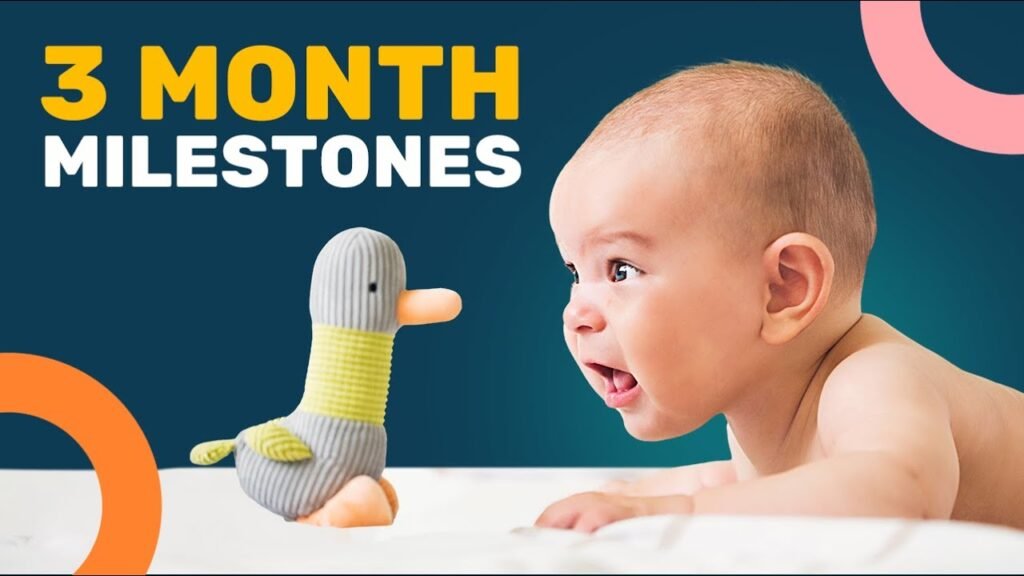If you have a three-month-old baby and are unsure about their developmental milestones, this video by Emma Hubbard is for you. By outlining what your three-month-old baby should be doing, you will gain a better understanding of their developmental progress. From gross motor milestones to hand control and sleep patterns, this video covers important aspects of a three-month-old’s development that will help you support your child’s growth and wellbeing.
Emma Hubbard, a pediatric occupational therapist and mother, provides valuable insights and tips on three-month-old development. Whether it’s about tummy time, rolling over, or recognizing hunger cues, this video offers practical advice to help you navigate your baby’s developmental journey. By watching this video and subscribing to Emma’s channel for more parenting tips, you can ensure that your child gets the best start in life.
Gross Motor Milestones
At three months of age, your baby should be reaching significant gross motor milestones. This includes having good head control while lying on their back. They should be able to keep their head in the middle of their body while watching your face or a stationary toy. Additionally, they should exhibit leg movement by stretching out their legs and kicking them when lying on their back. When on their tummy, a three-month-old should be able to lift their head between 45 to 90 degrees and have their elbows in line with or slightly in front of their shoulders. They may also enjoy kicking and stretching their legs in this position. As they are supported in sitting, a baby of this age should be able to hold their head upright with minimal head bobbing. Furthermore, they may push down on their legs when their feet are flat against a surface and roll from their side to their back.
Fine Motor Skills
Regarding fine motor skills, your baby should be showing progress in hand control. At three months old, they are becoming aware of their hands and can control them actively. They are likely to open and close their hands, reach out with their arms, and bring their hands together. Babies at this age might be starting to bring their hands to their mouths to suck. They can hold onto a toy placed in their hands but may struggle to actively let go of it. Encouraging them to practice these movements will aid in their fine motor skill development.

Cognitive Development
Three-month-old babies exhibit cognitive development through awareness of their surroundings. They will turn their heads towards sounds and voices and show an interest in faces. As you communicate with your baby, you will notice them going quiet, smiling, and possibly cooing in response to your voice. They may also start using various cries to convey different messages such as hunger, pain, or tiredness. Additionally, babies at this age may use facial expressions and body gestures to communicate with you and may even start laughing.
Social and Emotional Development
In terms of social and emotional development, three-month-old babies are typically interested in faces and respond to facial expressions. They use body gestures to express themselves and engage in social interactions. Encouraging positive social interactions with your baby, such as talking to them and making eye contact, can support their emotional development and strengthen the bond between you and your little one.
Communication Milestones
Communication milestones at three months include turning their head towards sounds, differentiating cries, and laughing. Babies will turn their heads towards noises, voices, or sounds to locate their source. They use different cries to indicate various needs and emotions such as hunger, discomfort, or fatigue. Additionally, your baby might start laughing as a form of early communication and expression of joy.
Sleep Patterns
Establishing healthy sleep patterns is crucial for your baby’s overall development. At three months old, babies typically sleep around 14 to 15 hours in a 24-hour period. They may have multiple naps throughout the day, lasting around 30 to 45 minutes each. Babies at this age may need assistance to resettle after waking from a nap and might require help falling asleep. Understanding your baby’s sleep patterns and creating a soothing bedtime routine can contribute to better sleep quality and overall well-being.
Parental Guidance
As a parent, it is essential to be aware of your baby’s developmental milestones and provide the necessary support for their growth. Understanding the importance of each milestone and actively engaging in activities that promote development can positively impact your child’s progress. Encouraging healthy sleep habits, seeking professional advice when needed, and creating a nurturing environment are key aspects of parental guidance to ensure your baby’s well-being and development.
Conclusion
In conclusion, three-month-old babies go through significant developmental milestones in gross and fine motor skills, cognitive abilities, social and emotional development, communication skills, and sleep patterns. It is crucial for parents to be attentive to these milestones, support their baby’s growth, and seek guidance when necessary. By encouraging positive interactions, promoting healthy sleep habits, and monitoring developmental progress, parents can provide the best possible foundation for their child’s development and well-being. Remember to celebrate each milestone and offer continuous support and encouragement to your baby as they navigate through these important stages of growth.

